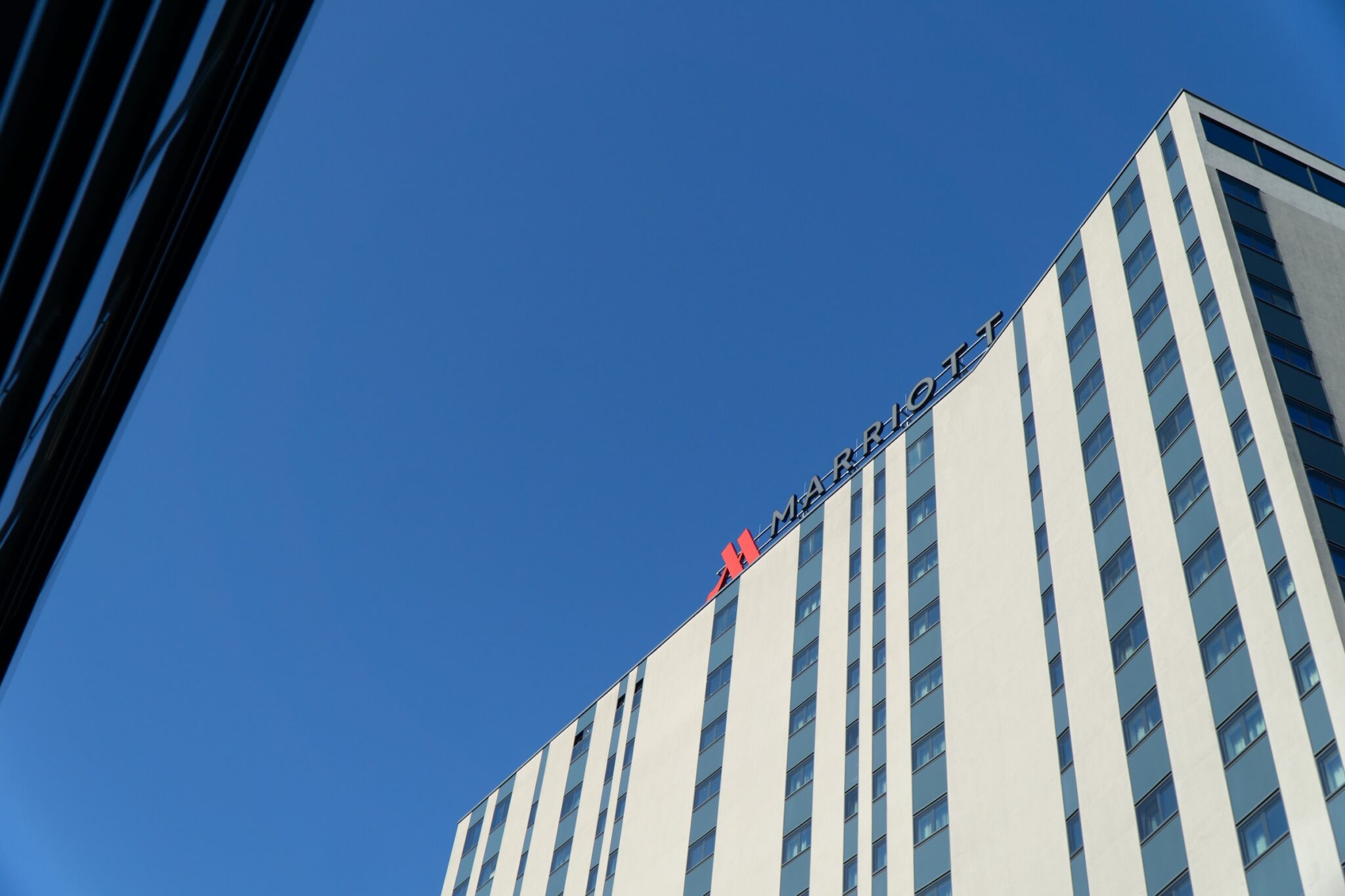Marriott International’s emissions data shows its greenhouse gas emissions increased in 2022, despite having committed to reductions.
Marriott released environmental performance data in July as part of its 2023 Serve 360 report. Skift Research has been keeping track of greenhouse gas reduction targets and actual performance for the largest hotel companies, and we dug deeper into Marriott’s numbers.
Credit where credit is due: Marriott’s reporting on its environmental (and wider social and cultural) impact is thorough, and the company has some of the best tracking of emissions of any hotel company.
One place where Marriott is falling behind competitors: It has committed to setting science-based targets, but has not submitted them yet. Instead, it has set its own carbon reduction goals for 2025. Science-based targets set in accordance with the Science-Based Target Initiative (SBTi) would ensure targets are in line with 1.5°C warming scenarios set out in the Paris Agreement.
Even so, Marriott has committed to the 1.5°C target, and we expect its own reduction goal will be in line with other companies like Accor, Hilton and IHG that already have science-based targets. For these companies, the commitment means a 46% reduction of scope 1 and 2 greenhouse gasses between 2019 and 2030.
Scope 1 and 2 emissions are all direct and indirect emissions from activities under operational control for hotel companies, which includes owned, leased, and managed hotel rooms. Importantly, this excludes franchised hotel rooms, which fall under scope 3 emissions.
Marriott’s reporting shows that its scope 1 and 2 emissions increased by 2.5% in 2022 compared to 2021.
Marriott is still on track to hit its 2030 emissions goal – but emissions are trending in the wrong direction.
The slump in demand during the pandemic meant that emissions decreased significantly, but as hotel rooms filled up again in 2022, emissions rose. Marriott should be achieving a 5.4% annual decline in emissions if it wants to gradually decline its emissions to hit the 2030 target.
Emissions per Room Stabilize
Marriott has an absolute emissions target and that’s key because hotel companies add new properties, organically or through acquisitions, all the time. An absolute target means it will work toward reducing its actual emissions even as it grows.
However, it is interesting to do some deeper analysis and use a common denominator to analyze performance over multiple years. We decided, with the information that’s publicly available, to compare the emissions with occupancy data, so we see what the average emissions per occupied room are.
During the pandemic, the average emissions per room skyrocketed as there were certain areas of the hotel that needed to stay up and running, even when not all rooms were open or occupied. This has since reverted back. In 2022, the average emissions per occupied room for Marriott hit 2019 levels, even when occupancy was not fully recovered yet. This is a positive sign: Marriott’s efforts to reduce emissions seem to be working. This year, 2023, will be the real test to see if the company can continue this trajectory.
Franchised Hotels Reduction Targets Still Missing
We’ll finish with a call to action for Marriott – and all hotel companies. We would like to see scope 3 targets.
The above data is for owned, leased, and managed properties only. However, 60% of Marriott’s rooms are franchised, and so the company could grow its franchising arm without having to consider any reduction targets.
More From Skift Research
Updated Mar. 15, 2023
Franchised hotels fall under scope 3, which is an optional reporting category and which does not fall under the carbon reduction targets set by the company. Nevertheless, two-thirds of the company’s emissions stem from this category.
Marriott’s owned, leased and managed portfolio declined by 1.5% between 2019 and 2022, even when its overall portfolio grew by almost 10% over the same time period. All of this growth came from franchising.
We believe it is important to keep hotel companies honest about their reduction targets and emission performance. Stakeholders should wonder whether the company is focusing on reducing its emissions through abatement efforts, or instead by reducing the size of its portfolio under operational control.
Wouter Geerts is Head of Research at Skift. Subscribe to Skift Research to read more of his analysis.
Subscribe to Skift Pro to get unlimited access to stories like these
{{monthly_count}} of {{monthly_limit}} Free Stories Read
Subscribe NowAlready a member? Sign in here
Subscribe to Skift Pro to get unlimited access to stories like these
Your story count resets on {{monthly_reset}}
Already a member? Sign in here
Subscribe to Skift Pro to get unlimited access to stories like these
Already a member? Sign in here
